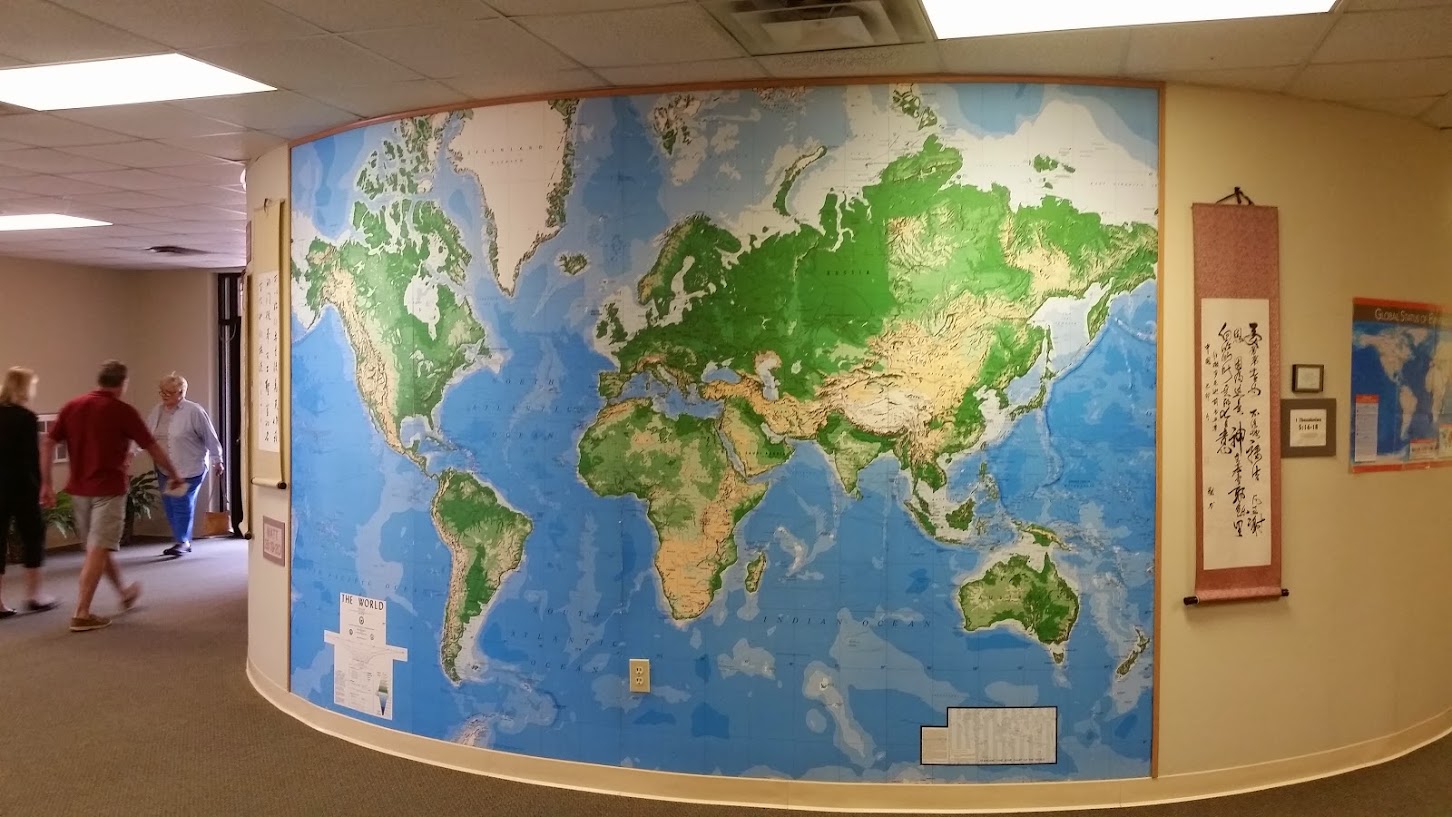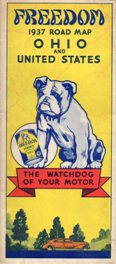The mailman dropped off something nostalgic a few days ago, an Army publication from the days when men were men, HMMWVs were new and the Army still ran IBM 360 mainframes.
That would be back around the end of the last ice age, or 1984 to be exact.
Need a map? The Army Engineers came up with this nifty graphic training aid to guide you through the arcane process of ordering maps.
Now, map supply was no minor concern. The Army had an almost insatiable appetite for paper maps, and in 1984 that demand was filled by the Defense Mapping Agency (DMA). The Defense Mapping Agency was a victim of its own success. They did such a good job of compiling, printing, distributing and updating their standard map products (which covered literally all of the world at one scale or another with the exception of the US and its territories – that job fell to the USGS), and they didn’t charge for their services. You could order all the maps you wanted and have them delivered for free. Even better, if you set up an automatic distribution account the Defense Mapping Agency would automatically ship you any updated map sheets for your area of interest whenever they were published.
As a result maps became a commodity item, something everyone was used to having immediately available at any hour, day or night.
In reality, we had to order the darned things, and the ordering process could be pretty tricky. Like many things in that great machine known as the Army supply system, if you filled all the paperwork out right you stood a 50/50 chance of getting what you ordered. If you made even a slight mistake – say you accidentally put down an incorrect map sheet number – your requisition was routed straight to supply system purgatory, where it languished indefinitely while your installation logistics office returned the dreaded ‘BB’ (backordered) status month after month after month.
So let’s peel open GTA 5-2-14 and see what it has to say about ordering maps.
Yes sir, let’s put that funny shaped helmet that’s two sizes too small on our head and get to work. Question – did the Army pubs system only hire third graders to do the illustrations for their training aids? Anyway, we’ve got a big operation coming up. The weather’s warming up and the Command Sergeant Major wants a briefing on the post spring cleanup plan. That’s as big and hazardous an operation as any I’ve ever encountered!

So the 5-2 has the map catalogs? Oh sorry, that would be the S-2. Didn’t anyone at the Engineer School take a look at this thing before giving the go-ahead to print and distribute hundreds of thousands of copies? Anyway, as a former battalion S-2 I can confirm that I had a complete set of DMA catalogs. I kept them locked in the bottom drawer of my safe, along with a loaded pistol, in case a second lieutenant dropped by to try to teach him/herself the arcane art of ordering maps. DMA map catalogs were simply too dangerous to leave unsecured. Someone might do something dumb and I’d come to work one day to find pallets of maps sitting outside my office (remember, they’re free and DMA will ship as many and as often as you like).
Oh damn. It’s about to get tricky…
The DMA map catalogs were hundreds and hundreds of pages of small scale maps covered in teeny-tiny squares, each with a unique number. Each square represented an individual map, and you were expected to put on your reading glasses (or for the really cool intel types, pull the monocular magnifier out of the Photo Interpretation Kit) and start writing down the number for each and every map you need to order. Remember, no mistakes!
Got it? It’s at about this point that the average second lieutenant’s eyes would glaze over…
This is where those in the know could have some fun. See that Priority box? If you wrote ‘3’ in there you’d get your maps pretty quick, but if you put a ‘1’ in there you’d start alarm bells ringing all around the Washington D.C.beltway as flag officers tried to figure out just why the 443rd Mess Kit Repair Battalion at FT Bragg needs 500 copies of every map of Western Europe by noon tomorrow. What do they know that Washington doesn’t? Maybe the 443rd is just a cover unit for Delta Force? Yeah, that has to be it!

Flat or folded? That’s like ‘boxers or briefs’. It didn’t matter what you put in that box, you were getting folded maps. Ever tried running a folded map through a Heidelberg offset press to print an operations overlay? It didn’t work. We tried everything short of holding the DMA director hostage at an undisclosed location in a strip club on 14th Street in Washington D.C. to get them to ship unfolded maps, to no avail. I think DMA just did it out of spite. Oh, and don’t forget to have an officer sign the requisition, because everybody knows only officers know what’s going on. You gotta’ wonder how many requisitions were submitted with signatures that read “Mickey Mouse, 2LT, IN”.
Where indeed to send that requisition? We’ll have a look at what the GTA says, then I’ll reveal the real secret to map supply!
Going to war in Europe? Send your request to the 649th at Tompkins Barracks in Schwetzingen. Judging by where the artist placed the star, Schwetzingen is located somewhere near the Polish/Czech border.
Going to war in Korea? Send the request to the USFK Engineer office. Going surfing Going to war in Hawaii? Send your request to Hickam Field.
Planning to go to war in Central or South America? Send your request to the DMA distribution office in Panama. I actually have a soft spot in my heart for this office. While stationed in Panama as part of the US Army South DCSINT I used their services a lot. The map warehouse was run by the Air Force and those guys were great. I’d call them from my office, tell them what I needed, hop in my HMMWV and drive up the road to Albrook Air Force Station and they’d have the maps sitting on the counter waiting for me.

Well kids, we’ve come to the end of our class on ordering maps the Army way. This GTA makes it look easy, right? We’ll listen close and I’ll tell you how map requisition really worked at places like FT Bragg, FT Campbell, FT Hood and other major installations… you’d just drive over to the installation map warehouse and start banging your fist on the counter until the map distribution guys coughed up what you wanted. It also helped if they were in your company and they worked for you. I don’t think I used these ordering procedures more than once or twice in my whole career.
– Brian






















